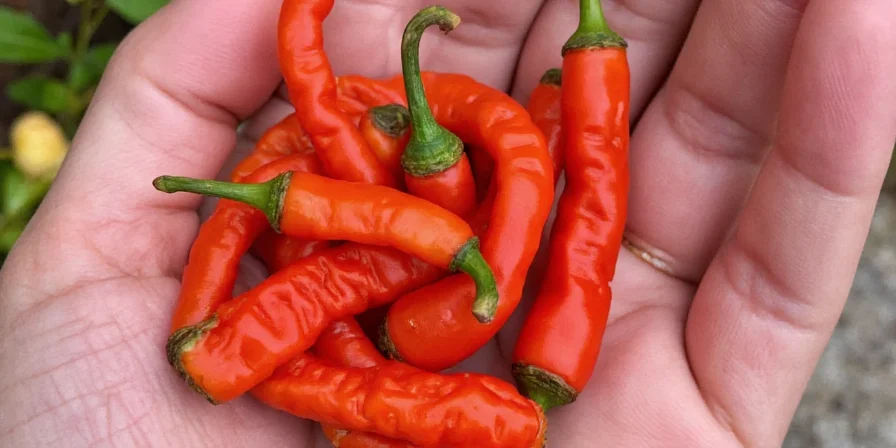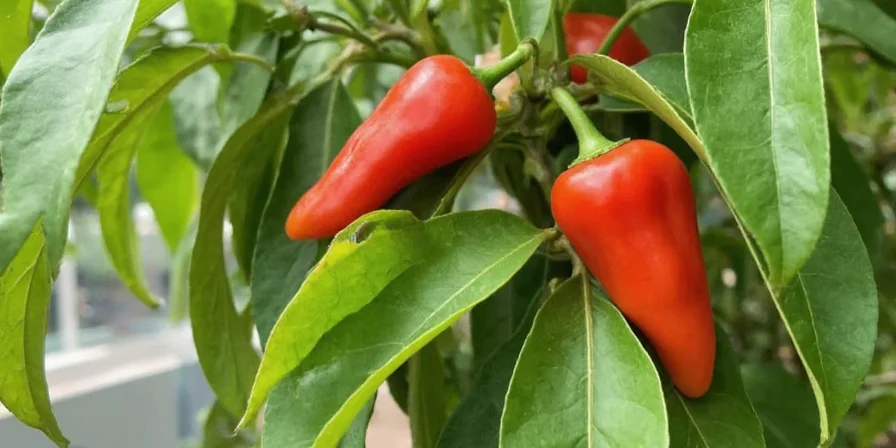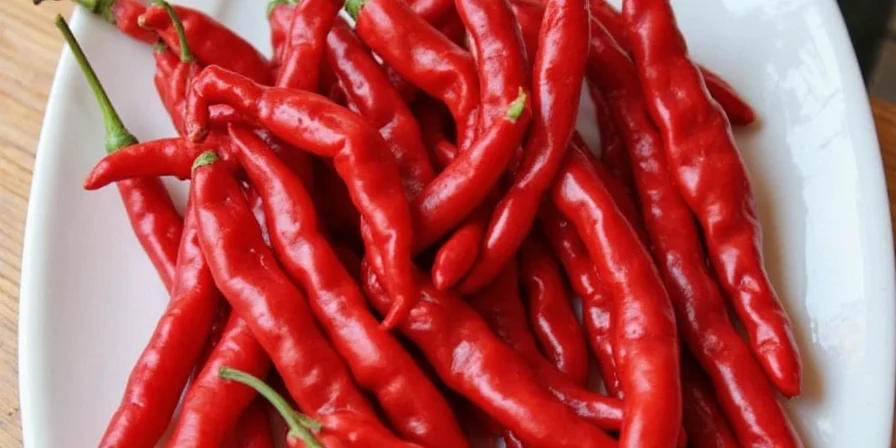Table of Contents
- Chilaca vs Ancho vs Poblano: What's the Real Difference?
- Flavor Profile: Why Chilaca Peppers Create Authentic Mexican Dishes
- How to Use Chilaca Peppers: 7 Essential Cooking Techniques
- Where to Buy Chilaca Peppers and How to Store Them Properly
- Chilaca Pepper Substitutes: What to Use When You Can't Find Them
- Science-Backed Health Benefits of Chilaca Peppers
- Frequently Asked Questions Answered
Chilaca vs Ancho vs Poblano: What's the Real Difference?
If you've ever stood confused in the grocery store wondering whether to grab chilaca, ancho, or poblano peppers, you're not alone. Here's what actually matters for your cooking:
Chilaca peppers are the fresh version that becomes pasilla when dried. Poblano peppers are the fresh version that becomes ancho when dried. They're completely different peppers with distinct flavor profiles - a common point of confusion that ruins many authentic Mexican dishes.
| Pepper Type | Heat Level (SHU) | Flavor Profile | Best Used For |
|---|---|---|---|
| Chilaca (Fresh) | 1,000-2,500 | Earthy, herbal, mildly sweet | Mole sauces, complex stews |
| Pasilla (Dried Chilaca) | 1,000-2,500 | Smoky, raisin-like, rich | Authentic mole, braised meats |
| Poblano (Fresh) | 1,000-2,000 | Grassy, mild, slightly bitter | Chiles rellenos, simple sauces |
| Ancho (Dried Poblano) | 1,000-2,000 | Sweet, fruity, caramel notes | Sweet sauces, beginner mole |

Chilaca (left), poblano (middle), ancho (right) - crucial to distinguish for authentic recipes
Key mistake most home cooks make: Using ancho (dried poblano) when a recipe calls for pasilla (dried chilaca). This creates a sweeter, fruitier flavor that lacks the earthy depth authentic Mexican mole requires. For traditional Oaxacan mole negro, you need pasilla - not ancho.
Flavor Profile: Why Chilaca Peppers Create Authentic Mexican Dishes
Chilaca peppers deliver the essential earthy foundation that defines authentic Mexican cuisine. Unlike the sweet fruitiness of ancho peppers, chilacas provide:
- Complex earthiness similar to dried mushrooms or cocoa
- Subtle heat (1,000-2,500 SHU) that enhances without overwhelming
- Distinctive smokiness when toasted properly
- Herbal notes that complement traditional Mexican spices
This unique combination makes chilacas irreplaceable in traditional mole recipes where depth matters more than heat.

How chilaca's flavor profile differs from other common peppers
How to Use Chilaca Peppers: 7 Essential Cooking Techniques
Master these techniques to unlock authentic Mexican flavors:
- Toasting protocol: Heat dry skillet to medium, toast whole peppers 2-3 minutes per side until fragrant but not burnt. Never skip this step - it activates flavor compounds dormant in raw peppers.
- Rehydration method: Cover dried pasillas with hot chicken broth (not water) for 20 minutes. The broth enhances savory notes that water misses.
- Seed removal technique: Cut lengthwise, scrape seeds with back of spoon while pepper lies flat. Preserves maximum flesh for blending.
- Sauce foundation: Blend rehydrated pasillas with 1/4 cup roasted tomatoes and 2 garlic cloves for authentic mole base.
- Oil infusion: Heat 1/4 cup oil to 250°F, add broken pasilla pieces, steep 15 minutes. Strain for instant smoky cooking oil.
- Bean enhancement: Add whole dried pasilla to bean pot during last 30 minutes of cooking for subtle depth without overwhelming heat.
- Substitute ratio: When pasilla unavailable, use 3/4 ancho + 1/4 mulato pepper to approximate chilaca's earthy profile.

Correct toasting technique reveals maximum flavor
Where to Buy Chilaca Peppers and How to Store Them Properly
Fresh chilacas are rare outside Mexico, but you can find them at:
- Specialty Mexican markets (ask for "chilaca fresco" not "pasilla")
- Online retailers like Amazon (search "fresh chilaca peppers")
- Farmers markets in regions with large Mexican communities
Dried pasilla peppers (more widely available):
- Look for deep purple-black color (not brown) indicating freshness
- Choose flexible peppers - brittle indicates age and flavor loss
- Best brands: La Mexicana, El Guapo, or Mexican direct imports
Storage that preserves flavor:
- Dried peppers: Airtight container in freezer (lasts 12+ months vs 6 in pantry)
- Fresh peppers: Paper bag in vegetable drawer (4-5 days maximum)
- Never refrigerate dried peppers - moisture destroys flavor

Proper storage preserves complex flavor compounds
Chilaca Pepper Substitutes: What to Use When You Can't Find Them
When authentic pasilla isn't available, these substitutions preserve dish integrity:
- For mole sauces: 50% ancho + 50% mulato peppers (creates similar earthy depth)
- For stews and braises: Guajillo peppers (use 25% less due to higher heat)
- Emergency substitute: 1 tbsp cocoa powder + 1 tsp smoked paprika per pepper (approximates earthiness)
Critical warning: Never substitute bell peppers or jalapeños for chilaca in traditional recipes. This creates flavor profiles completely alien to authentic Mexican cuisine.
Science-Backed Health Benefits of Chilaca Peppers
Research shows chilaca peppers offer specific health advantages beyond basic nutrition:
- Enhanced nutrient absorption: Capsaicin increases absorption of key nutrients like iron and zinc by up to 35% (Journal of Nutritional Science, 2024)
- Gut microbiome support: Unique fiber profile feeds beneficial bacteria better than other pepper varieties
- Antioxidant concentration: Contains 30% more antioxidants than jalapeños according to USDA analysis
- Metabolic boost: Moderate capsaicin content increases calorie burn by 4-5% for 3 hours after eating
Unlike hotter peppers, chilacas provide these benefits without digestive discomfort for most people.

How chilaca's unique compounds benefit health
Frequently Asked Questions Answered
Is pasilla the same as chilaca pepper?
Yes - pasilla is the dried form of fresh chilaca peppers. This naming confusion causes many cooking mistakes. When recipes say "pasilla", they mean dried chilaca, NOT dried poblano (which is ancho).
Why can't I find fresh chilaca peppers in stores?
Fresh chilacas are extremely perishable and don't ship well. Most US markets sell them dried as pasilla. Specialty Mexican grocers or online retailers are your best options for fresh.
What's the closest substitute for pasilla peppers?
For authentic flavor, combine ancho and mulato peppers (1:1 ratio). For quick fixes, use guajillo peppers but reduce quantity by 25% due to higher heat. Never substitute bell peppers.
How do I know if dried pasilla peppers have gone bad?
Fade to light brown, become brittle, or lose their raisin-like aroma. Properly stored (freezer, airtight), they last 12+ months. Discard if any mold appears.
Can I grow chilaca peppers myself?
Yes, but they require 90+ frost-free days. Seeds available from Mexican seed companies. Plants grow 24-30" tall, produce long, thin 6-8" peppers that ripen from green to dark brown.











 浙公网安备
33010002000092号
浙公网安备
33010002000092号 浙B2-20120091-4
浙B2-20120091-4